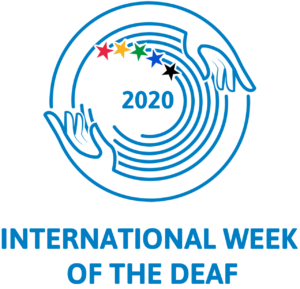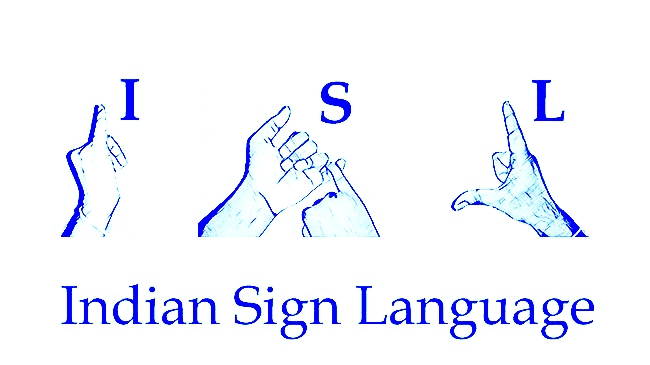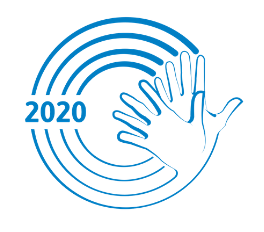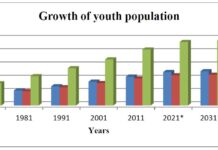23rd September International Sign language Day
The United Nations promotes international awareness and action on various issues by creating Special Observances. This is done by assigning a theme or topic for designated international days, weeks, years or decades. These are powerful advocacy tools to mobilize political will and resources to address global problems. Commemorating the date of establishment of the World Federation of the Deaf (WFD) in 1951, the UN General Assembly has proclaimed 23rd September as the International Day of Sign Languages in order to raise awareness on the importance of sign language in the full realization of the human rights of people who are deaf. This is also to support and protect the linguistic identity and cultural diversity of all the hearing impaired people and other sign language users. The WFD is a federation of 135 national associations of deaf persons, representing approximately 70 million deaf people’s human rights worldwide. The International Day of Sign Languages was first observed in 2018.
September 21 to 27, 2020
The World Federation of the Deaf has given a daily theme for the International Week of the Deaf to be observed in September 2020 upon which every society has the responsibility to respond and propagate.

- Languages
- 22nd Inclusive Sign Language Environments
- 23rd Sign Languages Are for everyone!
- 24th The Legal Recognition of National Sign Languages
- 25th Equal Opportunities for All Deaf People
- 26th Deaf Leadership
- 27th I sign for Human Rights!
Vital Statistics
According to the World Federation of the Deaf, there are approximately 72 million deaf people worldwide of which over 80% live in developing countries. Collectively, they use more than 300 different sign languages. The UN Secretary-General António Guterres told at the annual conference on the Convention of Rights of Persons with Disabilities 2019, that disability inclusion is not only a fundamental human right but also is “central to the promise” of the 2030 Agenda on Sustainable Development. Early access to sign language and services in sign language, including quality education available in sign language, is vital to the growth and development of the deaf individual and critical to the achievement of the internationally agreed development goals.
Yet another language!
Sign languages are natural languages by themselves and are structurally distinct from the spoken and written languages. An international sign language is also available, which is used by the deaf in international meetings and also while travelling and socializing. With limited lexicon and less complex compared to natural sign languages, the international sign language is considered a pidgin. The Convention on the Rights of Persons with Disabilities obligates states to facilitate the learning of sign language and promote the linguistic identity of the deaf community. It recognizes and promotes the use of sign languages as equal in status to spoken languages. If sign language is considered a mere gesture, the deaf children will be deprived of a language, and would not be able to define their own lives.
Raise your hands
The United Nations promotes international awareness and action on various issues by creating Special Observances. This is done by assigning a theme or topic for designated international days, weeks, years or decades. These are powerful advocacy tools to mobilize political will and resources to address global problems. Commemorating the date of establishment of the World Federation of the Deaf (WFD) in 1951, the UN General Assembly has proclaimed 23rd September as the International Day of Sign Languages in order to raise awareness on the importance of sign language in the full realization of the human rights of people who are deaf. This is also to support and protect the linguistic identity and cultural diversity of all the hearing impaired people and other sign language users. The WFD is a federation of 135 national associations of deaf persons, representing approximately 70 million deaf people’s human rights worldwide. The International Day of Sign Languages was first observed in 2018.
September 21 to 27, 2020
21st Sign languages
22nd Inclusive Sign Language Environments
23rd Sign Languages Are for everyone!
24th The Legal Recognition of National Sign Languages
25th Equal Opportunities for All Deaf People
26th Deaf Leadership
27th I sign for Human Rights!
Vital Statistics
According to the World Federation of the Deaf, there are approximately 72 million deaf people worldwide of which over 80% live in developing countries. Collectively, they use more than 300 different sign languages. The UN Secretary-General António Guterres told at the annual conference on the Convention of Rights of Persons with Disabilities 2019, that disability inclusion is not only a fundamental human right but also is “central to the promise” of the 2030 Agenda on Sustainable Development. Early access to sign language and services in sign language, including quality education available in sign language, is vital to the growth and development of the deaf individual and critical to the achievement of the internationally agreed development goals.
Yet another language!
Sign languages are natural languages by themselves and are structurally distinct from the spoken and written languages. An international sign language is also available, which is used by the deaf in international meetings and also while travelling and socializing. With limited lexicon and less complex compared to natural sign languages, the international sign language is considered a pidgin. The Convention on the Rights of Persons with Disabilities obligates states to facilitate the learning of sign language and promote the linguistic identity of the deaf community. It recognizes and promotes the use of sign languages as equal in status to spoken languages. If sign language is considered a mere gesture, the deaf children will be deprived of a language, and would not be able to define their own lives.
Raise your Hands…
It’s time for everyone to acknowledge and recognize the importance of preserving and propagating sign languages as part of linguistic and cultural diversity. They are crucial for expressing oneself, connecting with others and participating in all aspects of socio-economic, political and cultural domains.





